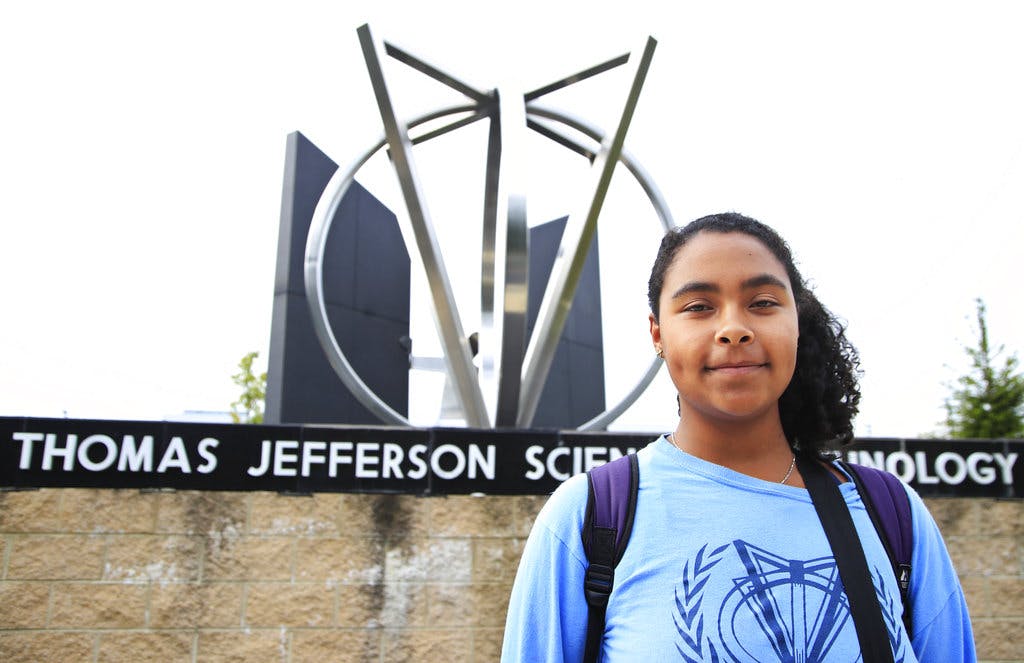A Golden Opportunity Amid the Fire and Fury Over Exam Schools
One solution asks schools to overthrow the whole-classroom approach that has dominated American schooling for more than a century.

In the battle over so-called exam schools, both sides are missing the opportunity.
From coast to coast, some are attacking these selective, public institutions — schools like Stuyvesant and Bronx Science in New York, Lowell in San Francisco, Boston Latin, and Thomas Jefferson in Fairfax, Virginia — because they are seen as disproportionately excluding Black and Hispanic students while favoring Asian Americans.
They have accordingly sought to change how these schools admit students by doing everything from barring the use of test scores to using lotteries.
The counter-response has been strong and swift.
In progressive San Francisco three school board members were recalled by voters angered by several of their actions, including efforts to change the admissions process at Lowell.
The Supreme Court, meanwhile, took action Monday to keep Thomas Jefferson’s historical admissions policy in place as lower courts consider a lawsuit claiming that the Fairfax County School Board’s actions to alter the school’s admissions process discriminated against Asian Americans.
Viewing people in the best possible light, both sides of the debate are genuinely angry because they feel that students are being denied opportunities because of their race.
Eliminating opportunities for students to go to school in academically rigorous environments because of some belief in “what’s fair,” however, isn’t a viable solution.
While admissions tests today may confer advantages based on such factors as applicants’ wealth, the failings of their traditional schools, social connections, or birth months in the academic year, they aren’t explicitly discriminating based on one’s race.
As with MIT reinstating its use of SAT or ACT results in its applications process because success on those tests was predictive of student success, it’s possible that success on admissions tests predict success in exam schools. That’s because without a baseline of knowledge and skill, students won’t be able to handle the rigors of the curriculum. If these schools admit unprepared students, they will need to water down the curriculum or support certain students in ways the schools weren’t designed to do.
Given that the United States already underinvests in its gifted and talented students, neither of those actions is prudent. Nor is cutting opportunities for individuals who would benefit from an academically rigorous environment with other similarly minded peers.
Still, the status quo of exam schools shouldn’t be America’s primary gifted and talented strategy.
That today’s exam schools serve some 18,000 of America’s 15 million high school students — 0.12 percent — should set off alarm bells. Exam schools were born in a time of educational scarcity. That creates the conditions for battles over scarce seats.
There are two approaches to remedying this.
The first is to build new schools or create new gifted and talented programs inside traditional schools. But starting schools and programs from scratch is expensive, slow, and often controversial.
This approach is also too simplistic based on what we’ve learned about human development — namely, that individuals have different strengths and weaknesses and learn at different rates.
Consequently, there isn’t one definition for academic giftedness. Someone might be strong in certain subjects but not in others. Nor is it the case that someone who isn’t ready for a rigorous program today might not be ready for it later — and vice versa.
That suggests a second solution, which is gaining traction: personalizing learning for each individual’s needs within existing schools.
This isn’t straightforward, either. It asks schools to overthrow the whole-classroom approach that has dominated American schooling for more than a century. In this traditional approach, one teacher moves students through the curriculum in lockstep regardless of any individual student’s understanding.
In a personalized model of learning, students learn at their own pace and have the freedom in high school to explore areas of passion in-depth.
Blended learning — the use of online learning in schools — makes this option readily available today to all students, regardless of where they go to school, so long as schools move past the traditional schooling model.
That means all schools can provide an environment in which more students can learn at the right level for them. If they need to take additional time on a concept in order to master it, that’s okay. If they are excelling and ready to work above their grade level, that works as well. Learning through technology allows them that flexibility.
Technology also enables the creation of virtual communities of learners so that students can be pushed by their peers, even if the students sitting next to them are not at their same level.
From the Lindsay Unified School District in California to the Purdue Polytechnic High School in Indiana, more schools have been adopting this approach over the past decade.
It’s time additional schools followed suit so that fewer students are denied the learning opportunities that best fit their talents.

